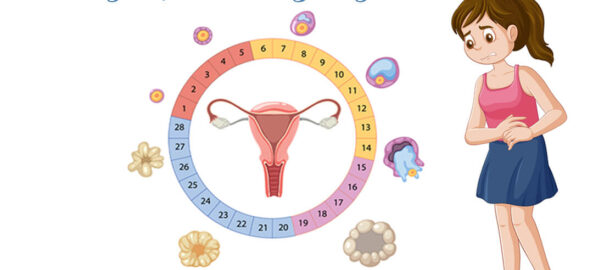
Women’s lower abdominal pain can be discomforting and disruptive, but various natural remedies can relieve and help manage the associated symptoms. From herbal teas to dietary adjustments, these remedies offer gentle yet effective ways to alleviate discomfort and promote overall menstrual health. In this article, we’ll explore some natural remedies that can be incorporated into your routine along with lower abdominal pain treatment to manage the symptoms of lower abdominal pain.
Understanding Lower Abdominal Pain
Lower abdominal pain in women refers to discomfort or pain experienced in the area below the belly button and above the pelvic bone. This region is often called the lower abdomen and encompasses various organs and structures, including the reproductive organs, urinary system, and pelvic muscles. Pain in the lower abdomen can vary from slight discomfort to intense pain and may result from a range of normal or pathological factors. It’s important to note that not all abdominal pain is a cause for concern. Many women consider mild discomfort during menstruation or ovulation to be normal. However, persistent or severe pain disrupts daily activities and medication for lower abdominal pain, accompanied by other symptoms like menstrual irregularities to abnormal bleeding.
Symptoms for Women’s Abdominal Pain
Lower abdominal pain can significantly disrupt a woman’s daily life and cause worry. Understanding the symptoms of this discomfort and learning effective strategies to manage them is crucial for maintaining overall well-being. Symptoms of abdominal pain in women can vary depending on the underlying cause. Here are some common signs that may accompany abdominal pain:
Menstrual Irregularities: Menstrual irregularities refer to changes in the regular pattern of a woman’s menstrual cycle. Abdominal pain associated with conditions like dysmenorrhea (painful menstruation) or endometriosis can often be accompanied by these irregularities:
- Irregular Menstrual Cycles: Women may experience shorter or longer cycles than their usual pattern.
- Heavy or Prolonged Bleeding: Menstrual periods might become exceptionally heavy or last longer than usual.
- Pain During Intercourse: Painful intercourse, known as dyspareunia, can be experienced due to conditions like endometriosis, which cause deep pelvic ache.
Bloating: Bloating often accompanies lower abdominal pain and can make the discomfort more pronounced. The sensation of fullness feels distended and uncomfortable, often accompanied by a feeling of pressure or heaviness. While bloating might not be painful, it can contribute to overall discomfort and impact a woman’s quality of life.
- Hormonal fluctuations: Hormonal changes during the menstrual cycle can also contribute to temporary bloating in women.
Urinary Symptoms: Abdominal pain related to urinary tract issues or pelvic inflammatory disease (PID) can lead to a range of urinary symptoms:
- Frequent Urination: A woman might need to urinate more frequently than usual.
- Burning Sensation: Pain or a burning sensation during urination can indicate a urinary tract infection (UTI).
- Cloudy or Strong-Smelling Urine: Changes in urine colour or odour can be signs of infection or inflammation.
- The urgency to Urinate: A constant urge to urinate, even when the bladder isn’t full, can be a sign of an infection.
Different other additional Symptoms Lower Abdominal Pain Treatment
Vaginal Discharge: Infections that cause lower abdominal pain, such as PID or certain sexually transmitted infections (STIs), can also result in changes in vaginal discharge:
- Abnormal Vaginal Discharge: Women may notice an increase in vaginal discharge that differs from their normal release.
- Foul Odor: The discharge might have a strong, unpleasant odour.
- Discomfort or Itching: Some infections can also cause vaginal pain or itching.
Abnormal Bleeding: Experiencing unusual vaginal bleeding may indicate certain conditions associated with lower abdominal pain.:
- Spotting: Light vaginal bleeding between periods or after intercourse can indicate underlying issues.
- Abnormal Menstrual Bleeding: Irregular bleeding patterns deviate from a woman’s usual cycle can also occur.
Top of Form
- Cramping Sensations: Cramps are involuntary muscle contractions that can cause a sudden and sharp sensation of pain or discomfort. When women experience lower abdominal pain, cramps are commonly linked to the uterus and the pelvic muscles. Cramping sensations in the lower abdomen can be caused by various factors, including:
- Menstrual Cramps: During menstruation, the uterine muscles contract to help shed the uterine lining. These contractions can lead to cramp-like sensations in the lower abdomen.
- Ovulation: Some women experience mild cramps during ovulation when an egg is released from the ovary.
Natural Remedies to Manage Lower Abdominal Pain
- Chamomile Tea: Chamomile tea is known for its calming properties. It effectively relaxes muscles, reduces inflammation, and relieves lower abdominal pain cramps. Enjoy a warm chamomile tea during your menstrual cycle to help alleviate discomfort.
- Ginger: Ginger has anti-inflammatory and pain-relieving properties. You can add fresh ginger to your meals or brew ginger tea. Ginger may help ease nausea, bloating, and digestive discomfort, often accompanying lower abdominal pain.
- Peppermint Oil: Peppermint oil has muscle-relaxant properties that can help ease cramps and spasms in the lower abdomen. You can apply diluted peppermint oil topically or enjoy peppermint tea for its soothing effects.
- Turmeric: Turmeric contains curcumin, a natural compound with anti-inflammatory properties. Consider adding turmeric to your diet through curries, smoothies, or warm milk to relieve pain.
- Hydration: It’s important to hydrate yourself to maintain healthy digestion and avoid constipation. Drinking enough water can ease abdominal discomfort and promote overall well-being.
- Yoga and Stretching: Performing gentle yoga poses and stretches can effectively relax the muscles in the lower abdomen, relieve tension, and enhance blood circulation in the region.
- Breathing Techniques: One way to alleviate abdominal discomfort is by practising deep breathing exercises. These exercises effectively reduce stress and anxiety, which can worsen abdominal pain.
- Acupressure and Reflexology: Applying gentle pressure to specific points on the body, such as the abdomen or feet, can help stimulate circulation and promote relaxation.
- Mint Leaves: Mint leaves have a cooling and soothing effect on the digestive system. Add fresh mint leaves to your water or prepare mint tea to relieve bloating and discomfort.
Common Treatment Options
The treatment for lower abdominal pain largely depends on its underlying cause. Here are some general tips and approaches to consider:
- Relaxation: Mild menstrual cramps or ovulation discomfort might benefit from rest, a warm bath, or gentle exercise.
- Heat Therapy: You can find relief from cramps and muscle tension in the lower abdomen by using a heating pad or warm water bottle.
- Hydration and Diet: Staying hydrated and maintaining a balanced diet can prevent digestive issues contributing to lower abdominal discomfort.
Managing the symptoms of women’s lower abdominal pain requires lifestyle adjustments, self-care practices, and the best medication for lower abdominal pain. By understanding the common signs and employing strategies such as maintaining a balanced diet, practising heat therapy, engaging in regular exercise, and managing stress, women can take proactive steps towards alleviating discomfort and improving their overall quality of life. Remember that each individual’s experience with lower abdominal pain is unique, so tailoring your approach to fit your needs is essential.










